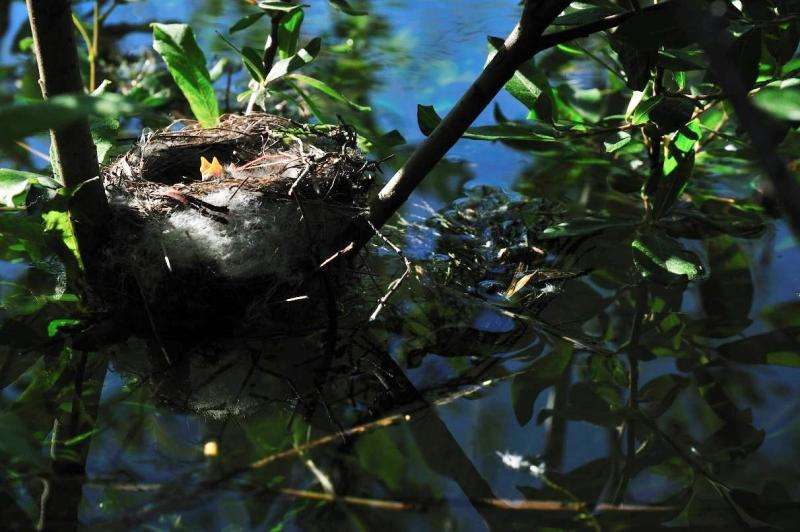Bad news and good news for birds nesting at reservoirs

In a six-year study at Arrow Lakes Reservoir in British Columbia, researchers from Cooper, Beauchesne and Associates and Simon Fraser University found that while some nests failed due to flooding as the reservoir filled up in the spring, the higher water levels actually provided benefits for the nests that survived. Their results, published this week in The Condor: Ornithological Applications, show that overall, nesting in the reservoir's riparian areas did not reduce nest success.
More than half of the world's major river systems are regulated by dams and reservoirs. Many bird species rely on riparian habitat, building their nests in the vegetation that lines rivers and streams. However, whether they can find success nesting on the shores of reservoirs that are drained and flooded according to the needs of water storage rather than the needs of wildlife has been largely an open question.
The area around a reservoir's margins that is flooded and drained each year is called the "drawdown zone;" this study focused on Yellow Warblers (Setophaga petechia) and Willow Flycatchers (Empidonax traillii) nesting in shrubs within this zone. The overall survival rate did not differ between flooded and unflooded areas, even though 28% of warbler nest failures and 50 percent of flycatcher nest failures were caused by flooding when water inundated their nesting habitat. The researchers speculate that rising water levels actually helped protect the nests from predators, so that while they were more likely to fail due to flooding, they were less likely to fail due to other causes. Previous studies have found evidence that nests built over water are safer from land-based predators, such as a paper published in the January 2014 issue of The Condor's sister journal The Auk: Ornithological Advances which showed that Andean forest birds nesting on small river islands gain protection from land-based predators.
"Nest flooding is a fairly graphic consequence of reservoir operations, and it is natural to want to measure this impact by adding up the percentage of drowned nests," according to lead researcher Harry van Oort. "Going into this analysis, we realized that nest flooding would be just one of several ecological impacts to nest survival. Our results confirmed this suspicion. However, we were surprised by the extent to which Willow Flycatchers were compensated for nest flooding with reduced nest depredation."
Reservoirs can still be bad news for birds—ground-nesting birds typically don't fare as well as the shrub-nesting birds followed in this study, and many populations have suffered habitat loss following reservoir construction. However, this study provides the first assessment of how shrub-nesting birds fare in drawdown zones, and it's encouraging to learn that the riparian vegetation found at the margins of human-created reservoirs has the potential to be productive bird habitat.
More information: Do fluctuating water levels alter nest survivorship in reservoir shrubs? is available at www.aoucospubs.org/doi/full/10 … 1650/CONDOR-14-154.1
Provided by The Condor: Ornithological Applications

















